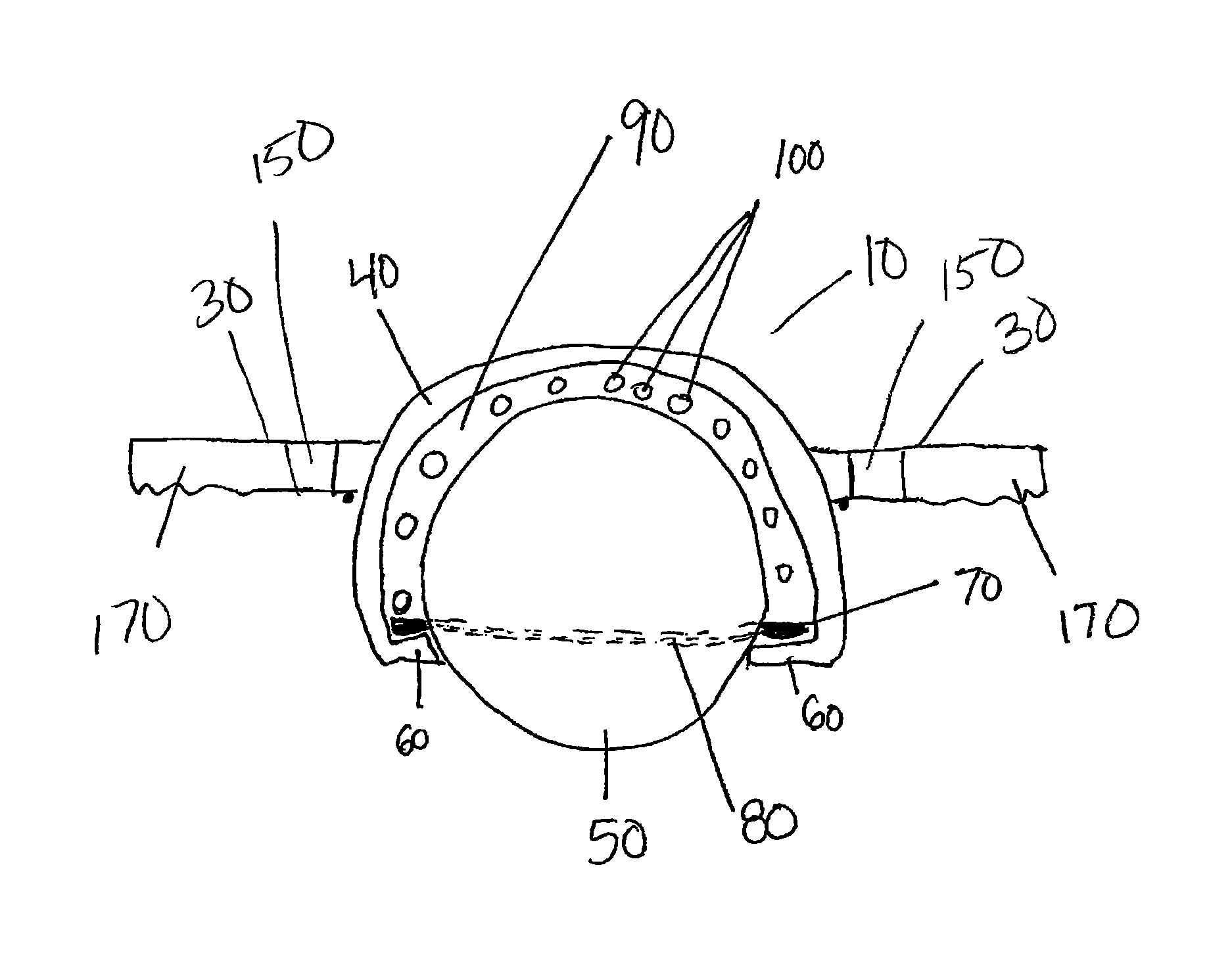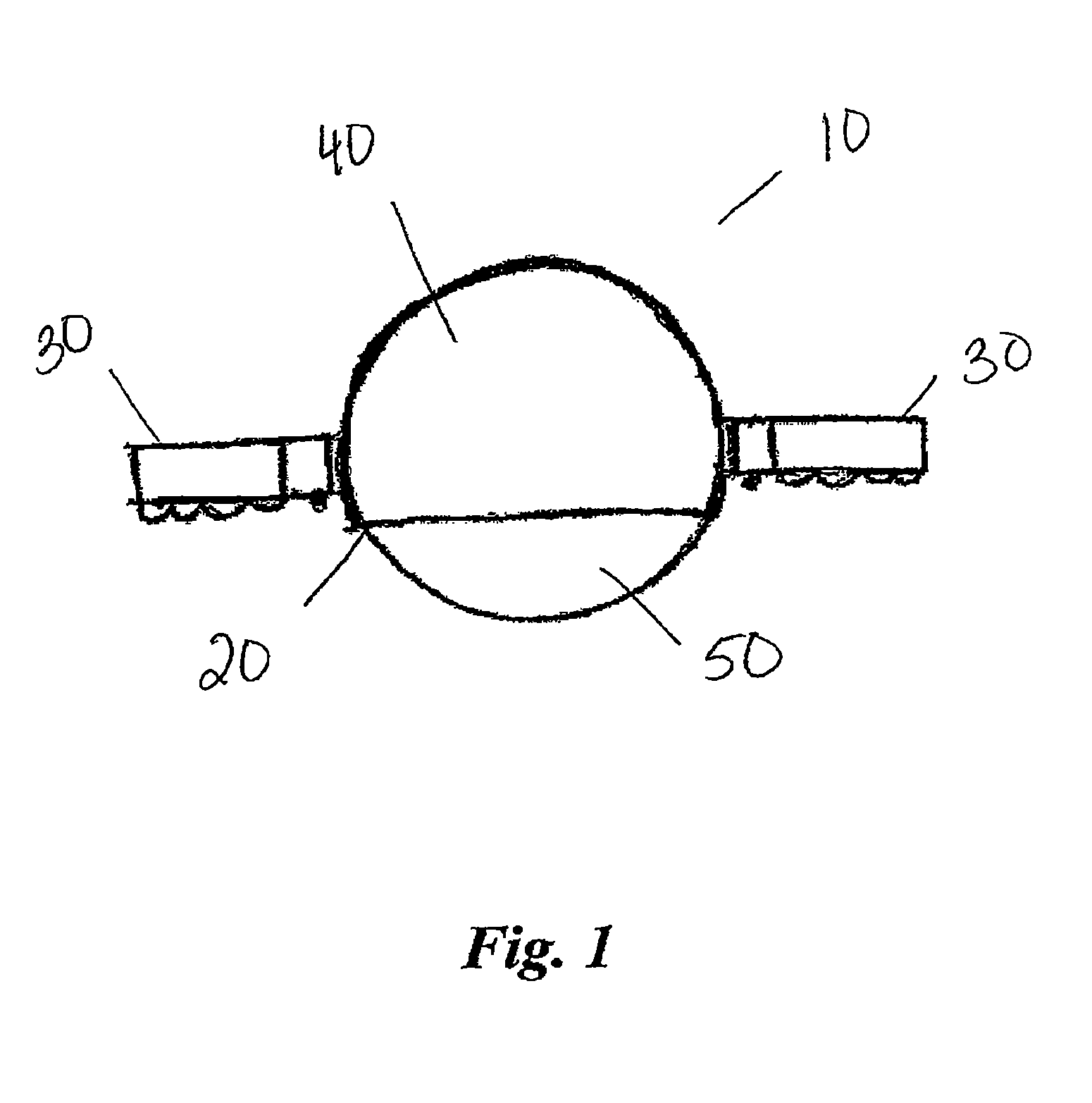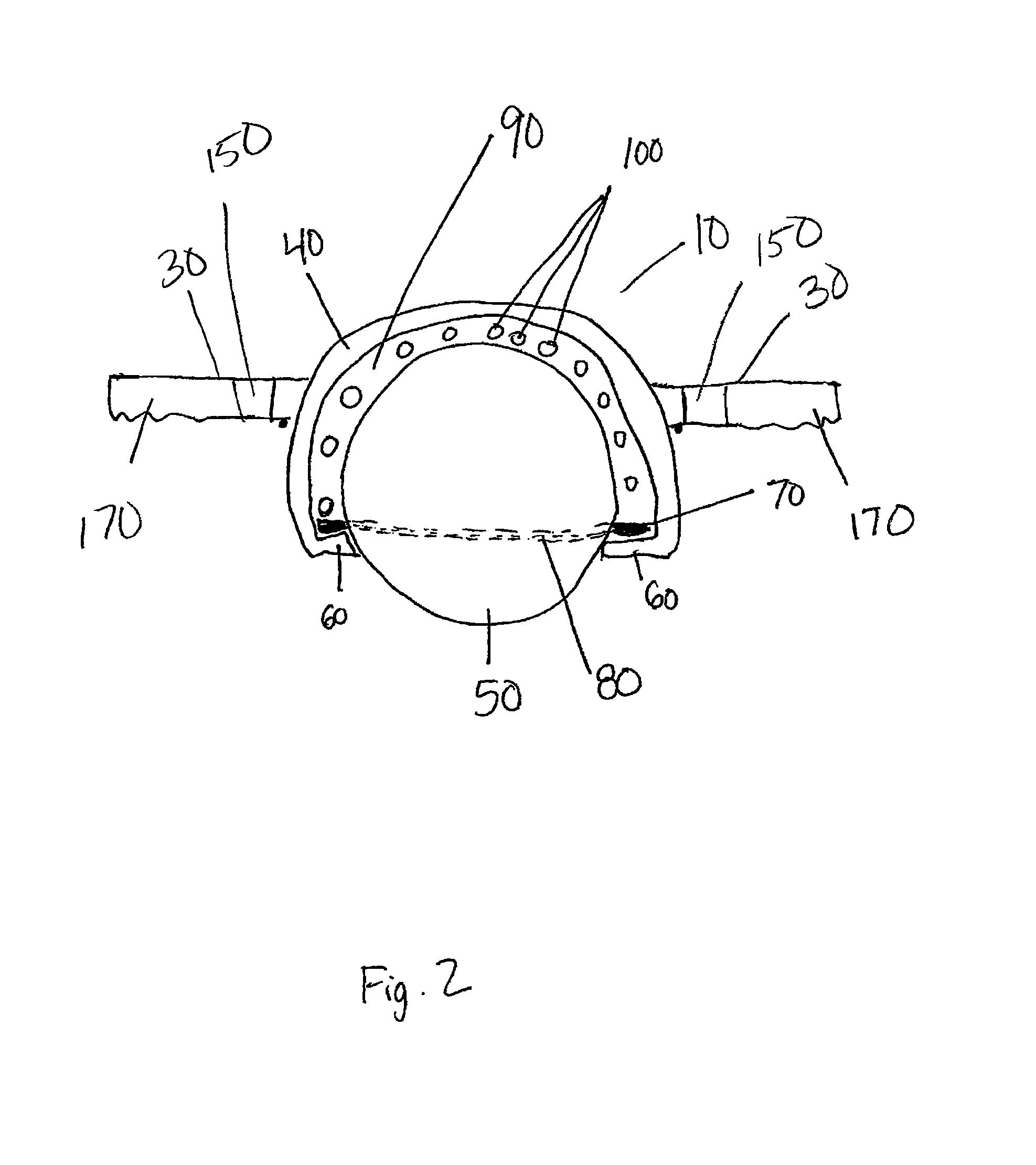Abdominal exercise device
a technology for abdominoplasty and abdominoplasty, which is applied in the field of abdominoplasty exercise devices, can solve the problems of limited abdominoplasty exercise to conventional sit-ups and crunches, injury to the hip flexor muscles, and potential low back pain or lower back injuries, and achieve the effect of strengthening the entire anatomical cor
- Summary
- Abstract
- Description
- Claims
- Application Information
AI Technical Summary
Benefits of technology
Problems solved by technology
Method used
Image
Examples
Embodiment Construction
[0031]Referring to the drawings, an exercise device according to the present disclosure is shown and generally referenced to by numeral 10. Exercise device 10 allows a user to exercise the abdominal muscles and core muscles with a single device that can be easily adapted into any core training routine. FIG. 1 shows one embodiment of exercise device 10 having a base 20 that includes housing, or outer shell 40 and a ball 50. Base 20 has a removable handle 30 on each side that can be attached to housing 40.
[0032]Ball 50 is hollow and solid in structure. Ball 50 is able to support the body weight of a user of exercise device 10. Preferably, ball 50 is hollow to provide exercise device 10 with a lightweight feel and ease when transporting. Ball 50 is made from a resilient material such as high strength plastic, rubber, vinyl or other similar material. Preferably, ball 50 is a smooth sphere shaped structure allowing exercise device 10 to be used in a fluid motion. Ball 50 typically has a ...
PUM
 Login to View More
Login to View More Abstract
Description
Claims
Application Information
 Login to View More
Login to View More - R&D
- Intellectual Property
- Life Sciences
- Materials
- Tech Scout
- Unparalleled Data Quality
- Higher Quality Content
- 60% Fewer Hallucinations
Browse by: Latest US Patents, China's latest patents, Technical Efficacy Thesaurus, Application Domain, Technology Topic, Popular Technical Reports.
© 2025 PatSnap. All rights reserved.Legal|Privacy policy|Modern Slavery Act Transparency Statement|Sitemap|About US| Contact US: help@patsnap.com



